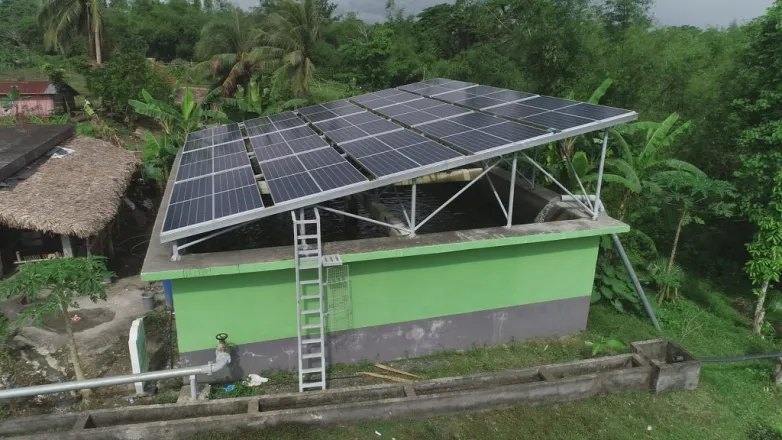Crop yield rises with solar-powered irrigation
- PV systems have helped farmers in the Philippines become less dependent on rain. Projects in Camarines Sur have shown pumping water with solar is not only cheap but can also raise rice yield.

The government of the Philippines has installed solar-powered irrigation systems in the province of Camarines Sur to help rain-dependent farmers become able to plant rice in three cropping seasons.
The solar system in Barangay Malawag – the Aguik-ican Malawag Solar-Powered Irrigation System (SPIS) – cost PHP6 million ($118,000) and can pump an average 1,000m3 in 6-8 hours. Powered by 60 solar panels, the irrigation system can discharge 35.42 liters per second, with the supply pipe able to discharge 20.62 liters per second.
Diesel savings
The system, which needs a 120m² site and water source, has an 11.54m by 9.44m by 2.02m water tank with a 220m3 capacity and is also equipped with a motor and 100m pipe for water distribution. “Maximum tank volume could be achieved in 1.73 hours when the supply pipe is closed and 4.13 hours when the supply pipe is open,” the government stated.
The Aguik-Ican East Farmers Association claims members could irrigate 35ha of formerly rain-fed upland rice land with the solar pumping system. Cultivating the area with the SPIS system saved PHP227,000 in diesel costs over one cropping and PHP454,000 over two.
Higher yield
The farmers claim yield rose around 500kg per hectare per cropping and hit a metric ton in one instance. Users added, solar-powered irrigation enabled them to better plan planting and harvesting to avoid adverse weather conditions.
The systems will operate for 30 years with minimum maintenance cost, the government stated.
The United Nations Industrial Development Organization is supporting the seaweed industry in the Philippines with solar-plus-storage on the island of Tawi-Tawi, in the Bangsamoro Autonomous Region in Muslim Mindanao, in the southernmost part of the country.
Also read
- Fast Prototyping Boosts Solar Efficiency and Sustainability
- 5 Practical Solar Solutions for Modern Technology Needs
- Understanding Renewable Energy Infrastructure - New Trends in Technology
- Wiltshire Solar Solutions Explained: Benefits for Local Homeowners
- Exploring the Key Players in Dubai’s Solar Panel Distribution Market

